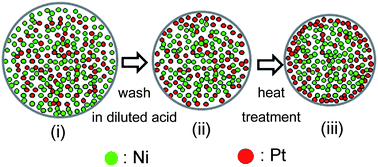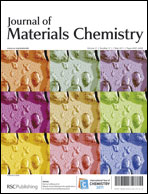Making Pt-shell Pt30Ni70nanowires by mild dealloying and heat treatments with little Ni loss
Abstract
Dealloying treatment is one way to make a Pt rich shell on Pt alloy through chemically depleting the surface of non-noble metals. However, this treatment usually causes more than half of the non-noble metal to be lost before the


 Please wait while we load your content...
Please wait while we load your content...